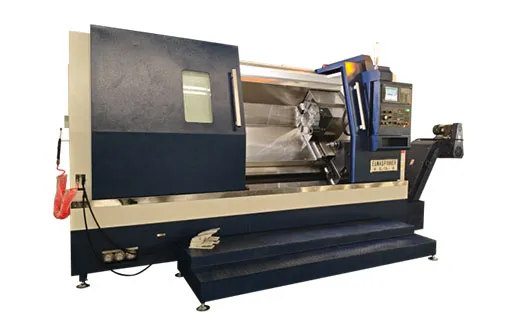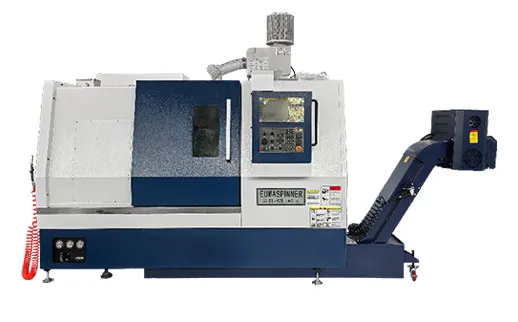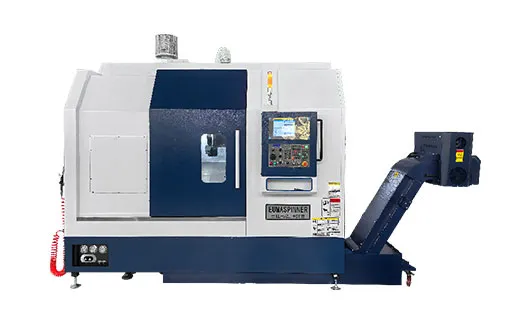In today's rapidly developing intelligent manufacturing landscape, CNC systems, the "brains" of machine tools, are crucial for production efficiency, product precision, and enterprise costs. However, due to factors such as equipment aging, improper operation, and environmental interference, CNC system failures are frequent, leading not only to production line downtime but also potentially significant economic losses. Drawing on industry practices, this article identifies four common types of CNC system failures and provides practical troubleshooting and prevention tips to help companies quickly resolve these issues and reduce the incidence of failures.
The power supply is essential for the proper functioning of CNC systems. This type of failure accounts for over 30% of all cases and is easily overlooked. Common problems include:
Voltage fluctuations or interruptions: Unstable power grid loads or external power supply line faults can cause sudden system crashes, parameter loss, or even damage to motherboard components. For example, a sudden drop in grid voltage at an automotive parts factory caused three CNC lathe systems to reboot, resulting in the scrapping of all workpieces in progress.
Power module damage: Long-term high-load operation, poor heat dissipation, or capacitor aging can cause abnormal output voltage from the power module, manifesting as system startup failure, flashing indicators, or alarm codes (such as "SV0430" in FANUC systems).
Poor grounding: Excessive ground resistance or loose grounding lines can easily introduce electromagnetic interference, causing system signal distortion, axis misalignment, data transmission errors, and other issues.
Troubleshooting recommendations: First, use a multimeter to check the grid voltage for stability (standard: AC 220V ±10% or 380V ±10%). Check the power module terminals for loose connections. Use a ground resistance tester to confirm that the ground resistance is ≤4Ω.
CNC system hardware includes key components such as the motherboard, CPU, memory, and interface cards. Failures in these components directly impact system functionality. Common types include:
Motherboard failure: Prolonged high temperatures, dust accumulation, or static electricity can cause short circuits in the motherboard circuits and burn out chips. Symptoms include an unresponsive system, a black screen, or frequent "System Internal Error" alarms.
Servo drive and motor failures: Servo drive overcurrent or overload (often caused by a stuck motor or incorrect parameter settings), or motor encoder damage, can cause axis motion to become immobile, reduce motion accuracy, and even lead to the risk of "runaway." For example, a machine tool manufacturer experienced dimensional deviations exceeding 0.1mm in workpieces due to servo motor bearing wear.
Input/output (I/O) interface failures: Poor contact on the interface card, aging cables, or short circuits in external devices can disrupt communication between the system and devices such as the machine panel, sensors, and solenoid valves. Symptoms include unresponsive buttons, off indicators, or "I/O Signal Loss" alarms.
Troubleshooting suggestions: Use the system self-diagnosis function to view the fault code, check the hardware wiring and appearance one by one (such as capacitor bulging, chip burn marks), and replace spare parts for testing if necessary.
Software and parameters are the "heart" of a CNC system. Improper operation or external interference can easily cause such failures. Common causes include:
System software crashes: Incompatible software versions, virus infections, or illegal operations (such as forced power off) can cause the system to fail to boot or enter "safe mode" after boot, rendering some functions inoperable.
Parameter loss or corruption: Battery depletion (lithium batteries that maintain parameter memory typically have a lifespan of 2-3 years), incorrect parameter modifications, or external electromagnetic interference can cause machine tool parameters (such as coordinate compensation values and servo parameters) to be lost, leading to abnormal coordinate axis motion and a sudden drop in machining accuracy. For example, a mold factory experienced repeated "overtravel" alarms on CNC machine tools due to parameter loss, preventing normal machining.
Program errors: Syntax errors in machining programs, incorrect coordinate value settings, or interrupted program transmission can cause the system to fail to execute the program or generate "Program format error" or "Coordinate out of range" alarms during execution.
Troubleshooting recommendations: Regularly back up system parameters and machining programs, and restore from backups if parameters are lost. In the event of a software crash, reinstall the system or upgrade to a compatible version. In case of program errors, check the syntax and coordinate values line by line.
CNC systems must work in conjunction with the machine tool's mechanical structure (such as guideways, screws, and spindles). Mechanical failures can easily be misdiagnosed as system issues. Common types include:
Screw and guideway failures: Insufficient lubrication, wear, or excessive backlash in the screw can reduce axis positioning accuracy and cause ripples on the machined surface. Guideway jams or obstructions can trigger servo system overload alarms.
Spindle failures: Worn spindle bearings, loose belts, or poor spindle box lubrication can cause unstable spindle speed, increased noise, or even failure to reach the set speed, impacting machining efficiency and surface quality.
Fixture and tool failures: Inaccurate fixture positioning, worn tools, or loose tool holders, while not system faults, can cause dimensional deviations and, in some cases, trigger the system's "overload" alarm.
Troubleshooting recommendations: Check the lubrication and wear of the screw, guideways, and spindle according to the machine's maintenance manual. Adjust backlash compensation parameters and regularly calibrate fixture and tool accuracy.
Compared to repairing problems after they occur, preventive maintenance can save companies more costs. We recommend starting with the following three key areas:
Regular maintenance: Clean the system's cooling vents and check the power wiring and grounding monthly; replace the power module's lithium battery and lubricate the lead screw and guide rails quarterly; and perform a comprehensive system hardware inspection and replace aging components annually.
Data backup: Back up system parameters and frequently used machining programs weekly and store them on separate media to prevent data loss.
Personnel training: Regularly train operators and maintenance personnel to familiarize themselves with system functions and troubleshooting procedures to avoid operational errors.
There are many types of CNC system failures, which are inevitable. However, as long as you understand the common fault types and troubleshooting methods and do a good job of daily prevention, you can minimize the impact of failures and ensure the stable operation of the production line.



GET A QUOTE